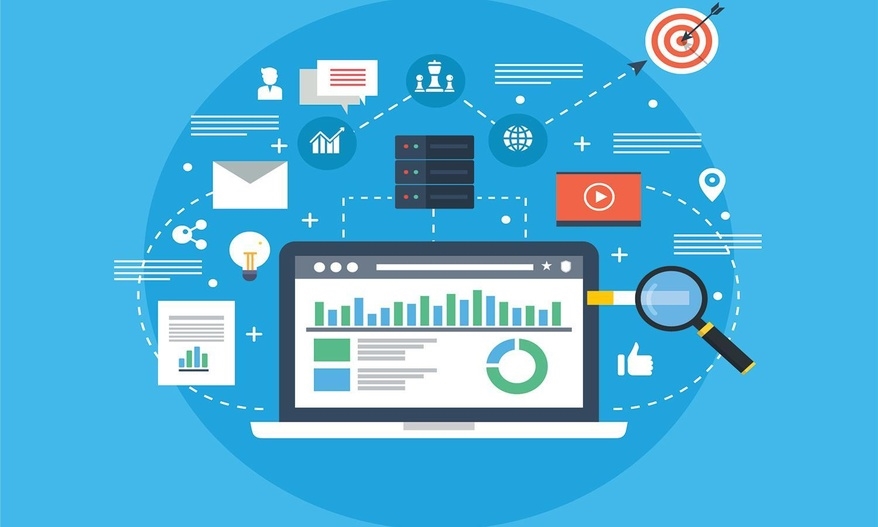Marketing data is not always perfect
Individual market targeting or audience modeling? To CDP or not to CDP? Different marketing perspectives on the data challenge.

The one thread running through almost everything at the fall edition of MarTech is the data challenge. “Digital marketing has delivered vast quantities of customer data, bringing with it the promise of targeting audiences, or even individuals, with relevant, personal and engaging messages at the right moment and in the right channel.” The words of Editorial Director Kim Davis in his opening keynote this morning.
There’s one obstacle, he continued: “The data is not always as perfect as you’d like it to be.” It can be incomplete, outdated, or siloed. “Or the data can be fine, but sunk deep in a data lake. Good luck activating it in anything like real-time.”
The keynote went on to reveal some different perspectives on confronting the data challenge from a leading agency figure and two experienced practitioners.
From individual data to data modeling
“The current state is that everybody wants it — being customer/consumer data; everybody’s finding out what their means of capturing it are, or should be; and everyone’s figuring out, what does the future hold?” Brad Herndon, until very recently Accenture Interactive’s Personalization, Data & Analytics Lead for North America derived his perspective from consulting with and advising the experience agency’s extensive customer base. “Something changes on an almost weekly basis,” he said.
What had been on brands’ minds previously, he said, had been whether investing in customer data would be effective in driving revenue. That concern is now supplemented by other concerns — legislation and regulation, and consumer privacy. “Could I potentially get into legal trouble about how data is used across my business?”
Another worry, of course, relates to the eventual deprecation of third-party cookies by the Chrome browser. “We’re trying to understand and quantify the long-term impact. It’s somewhat substantial. We’ve seen impacts ranging from 15 to 30% on return on digital media investment. The impact is real.”
Herndon anticipates a shift from marketing based on individual-level data to a modeling approach designed to expand reach and improve performance. “Similar to what FLoC has initiated, but there are many other solutions being examined closely.” Adoption is key, he said, because that’s the only way to find out how effective these alternative solutions are.
“I pushed for a CDP”
At HBO Max, SVP of Marketing Technology and Operations Su Kelsay faces different opportunities and challenges. The streaming channel, of course, is in the direct-to-consumer space. “We see a full 360 view of our consumer at all times. We see what our consumers are watching, what they’re clicking on, when they subscribe, when they unsubscribe, their entertainment preferences. We have this complete set of first-party data.”
That’s the opportunity: Using first-party data to growth through marketing. “The biggest challenge at HBO Max, as at many subscription services, is managing retention and keeping customers interested in paying month-to-month when they have a lot of different options out there.” Although her job is to market one service, her strategy is to treat new content as new product releases.
But it’s not just first-party data. “We use multiple data sources to supplement that data,” she said. This includes data on households that don’t yet subscribe to HBO Max. It’s possible to model across the U.S. population and not just HBO Max’s own data set. “It’s a key to our acquisition efforts.”
For Kelsay, the key to managing and activating this data is a CDP. “I pushed for a CDP specifically at HBO Max due to the major benefits of being able to have our first-party data integrated with various media and messaging platforms, so we can efficiently manage the hundreds of different marketing campaigns and tests that we run to support the personalized messaging and targeted media that we execute.”
Starting from reality
“More data, more problems, right? You fundamentally have to pick and choose,” said Director, Marketing Operations and Technology at El Camino Health, Pat Maigler. “They can’t get everything, and the more the martech vendors offer you, the more you have to consider, evaluate, compare.”
Marketers need to become more analytical in thinking about what data is most valuable and most actionable, he explained. Maigler is an advocate of a selective, step-by-step approach. If you start with the reality of imperfect data in different systems and map your way to the ideal of having all data in one place, the journey starts to look like a really long one.
According to Maigler, solutions like marketing automation, CDPs and CRMs are designed for specific use cases. “When you start to extend a CRM or even a CDP to be your source of truth for all things you’re kind of asking for trouble. It’s always smart to have some ownership of your data in-house where you can get your hands on everything. But it might be in different siloes, it might be stored in different technologies.”
A set of journeys
Maigler sees the data challenge as a journey with small wins along the way. This contrasts with Kelsay’s reliance on a single source of truth in a CDP — but she does have the advantage of being able uniformly to collect deterministic first-party data on her customers.
A business like HBO Max can target individual customers with personal, relevant recommendations. Most businesses, however, without universal subscriptions or sign-ins, will have to decide whether there will be enough reliable data in the post-cookie environment to make individual personalization worthwhile, or whether to return to modeling audience segments.
One thing is clear. This journey is far from over.
The post MarTech keynote: Marketing data is not always perfect appeared first on MarTech.
(47)



